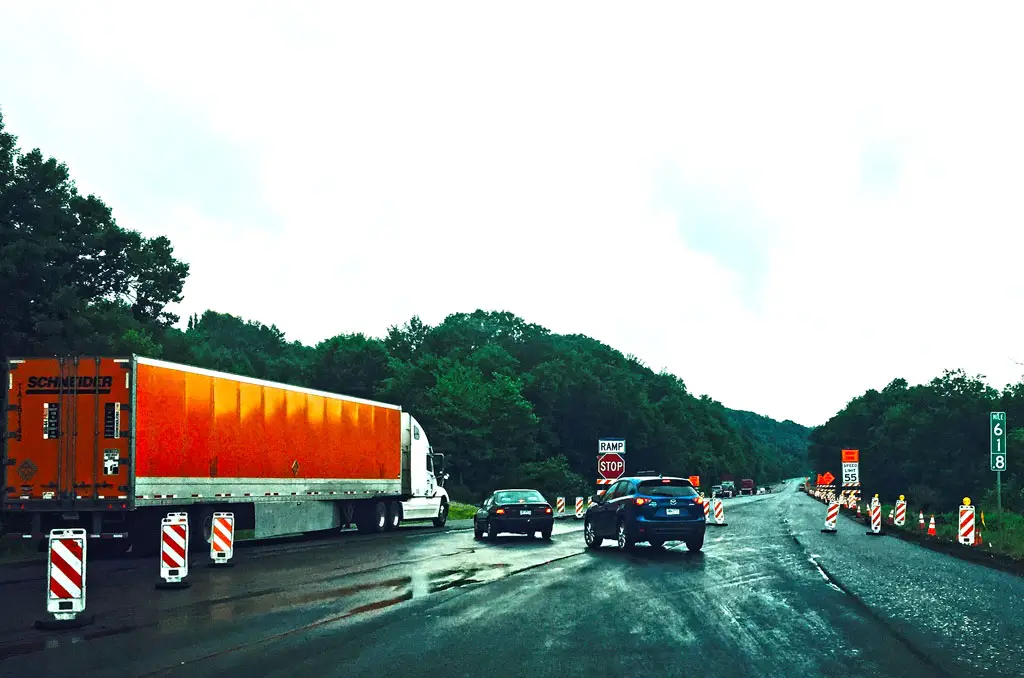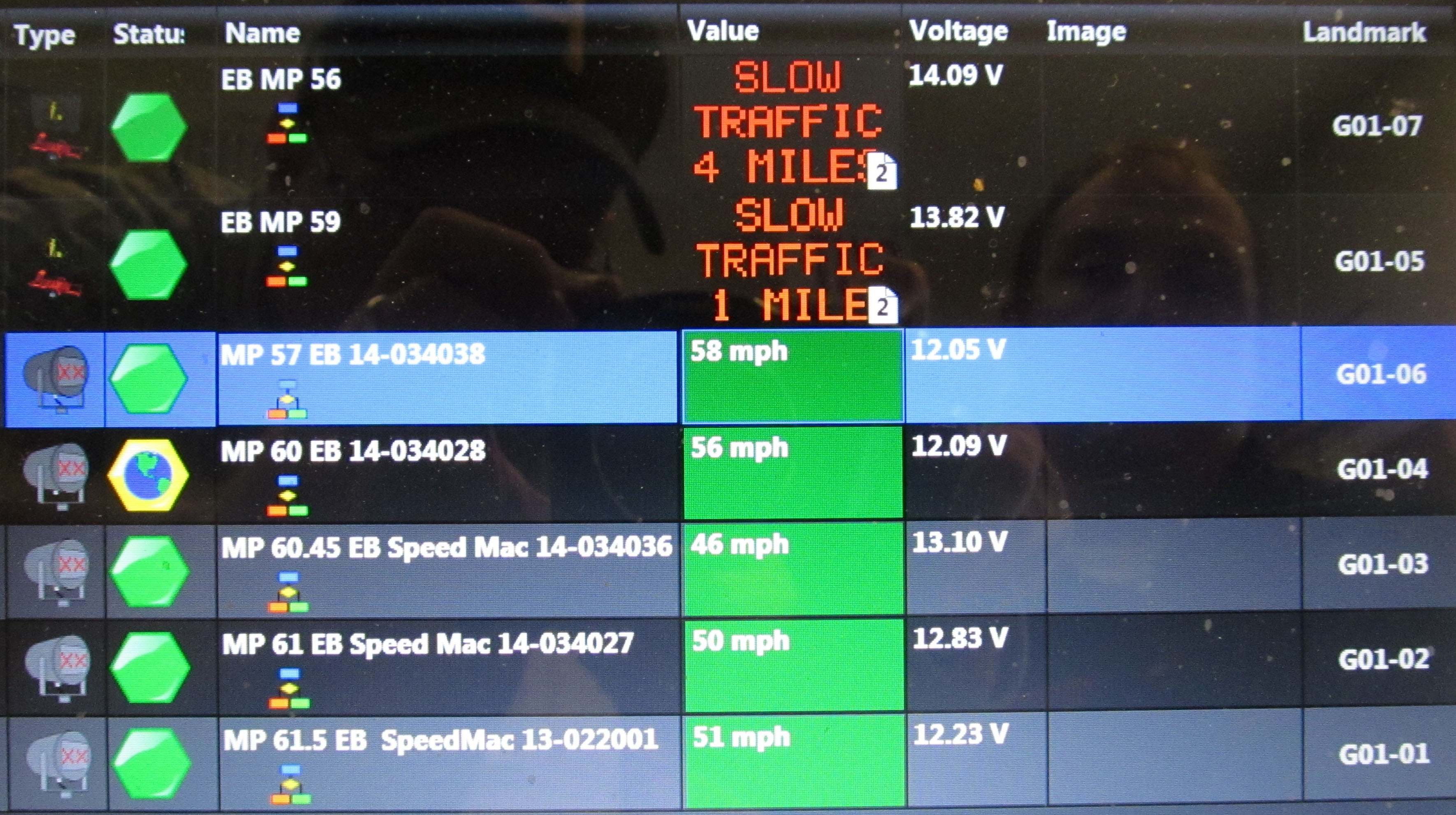
CLARION, PA. (EYT) – In response to ever-changing traffic conditions, PennDOT June 25 began implementing a new high-tech traffic control system in the work zone between mile markers 55 and 62 along Interstate 80 in Clarion County.
A motorist driving along Interstate 80 toward the work zone can now know several miles out if traffic is slowed or stopped, giving them more time to adjust and increasing safety for travelers and work zone employees alike.
This is made possible thanks to the Automated Queue Warning (AQW) system, which tracks the average traffic speed at various points, then uses that information to change the messages on portable roadside LED signs.
PennDOT engineer Bob Pento said the department decided to use the AQW system after traffic issues around the Interstate 80 project were worse than anticipated.
“Creating traffic models is not an exact science, and we’re often not sure what to expect,” Pento said. “This is just another tool in our toolbox to help address traffic issues.”
The AQW system, designed by Beth’s Barricades of Gibsonia, also relays traffic speed information in real time to PennDOT officials and work zone crews so they’re aware of the situation.
In other words, when a long line of traffic – or a traffic queue – is building up, they’ll already know about it and work to make adjustments.
“We were seeing more long queues with this I-80 project than we expected,” Pento said. “We can now be more adaptive to the conditions.”

The information from traffic speed sensors in the AQW system sends information to PennDOT officials, which is displayed on their computers. When traffic slows or is stopped, LED signs will display messages like those near the top, indicating about how far away the traffic delay exists. When traffic is flowing faster, PennDOT officials can still see its average speed, indicated in the green bars below the signs.
The system sends out a signal of slow traffic if the average traffic speed on Interstate 80 is less than 45 miles per hour, and it will consider traffic to be stopped if the average speed is under 15 miles per hour.
Ryan Miller of Beth’s Barricades said the system is already in place in eight different locations, and it has been incredibly successful at increasing the safety of motorists and work zone employees.
“We’d like to use this in conjunction with rumble strips to let people know what is coming, and we believe it can cut back on traffic accidents 75 percent,” Miller said. “We’ve done a similar system on a roadway in Texas and we’ve all but eliminated work zone accidents.”
While the AQW system can improve safety in a variety of ways, it particularly decreases rear-end collisions by helping drivers stay alert to changing traffic conditions.
According to the Federal Highway Administration, over 500 fatalities and 37,000 injuries occur in work zones nationwide each year, with more than 40 percent of fatal crashes being the result of a rear-end collision.
Safety Is The Goal
Implementing the AQW System is just the latest in a long line of PennDOT moves designed to keep travelers and work zone employees safe.
“We want to make safety a personal thing,” said PennDOT District 10 spokesperson Deborah Casadei. “We want you to get home safely, and we want to improve safety for our workers, too.”
As motorists have no doubt noticed, PennDOT has a number of projects in the works this summer. Traffic delays will happen, and safe driving measures should be taken.
“We encourage motorists to drive slowly and safely through any work zone,” said PennDOT Clarion County maintenance manager Bill Olinger. “There is a method behind all of our decisions, and it is to protect travelers and workers.”
Signs which feature universal color schemes and symbols help ensure all drivers understand road conditions.
“Some drivers do not know how to read English, and we’re aware of this,” Pento said. “So we make sure work zone signs are orange, the same as in other states. We also show symbols, for example when a road tapers from two lanes to one, we put up a sign showing that taper.”
Roadside and warning rumble strips also serve to alert drivers of the edge of roadways or changing conditions.
Copyright © 2024 EYT Media Group, Inc. All rights reserved. Any copying, redistribution or retransmission of the contents of this service without the express written consent of EYT Media Group, Inc. is expressly prohibited.








